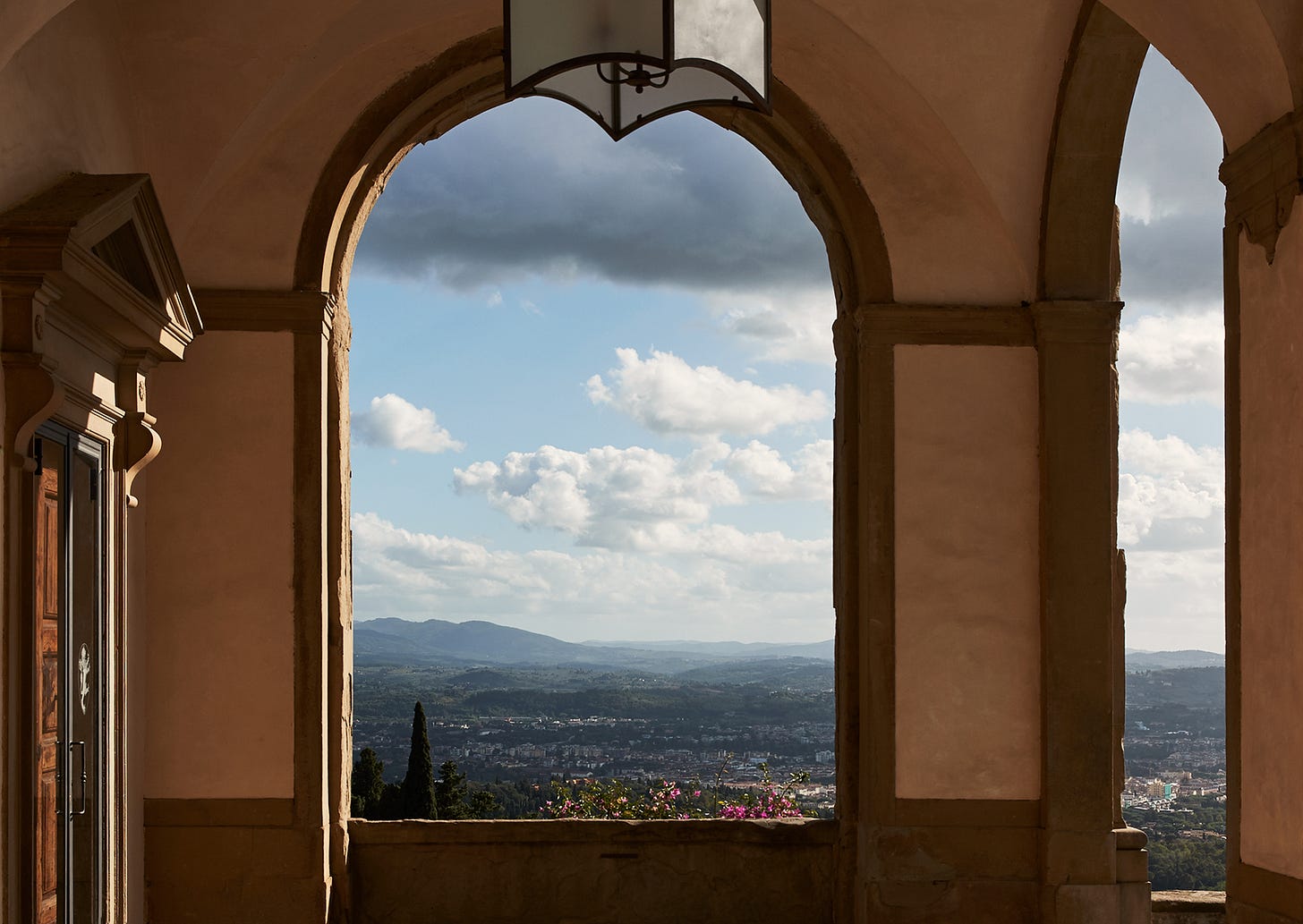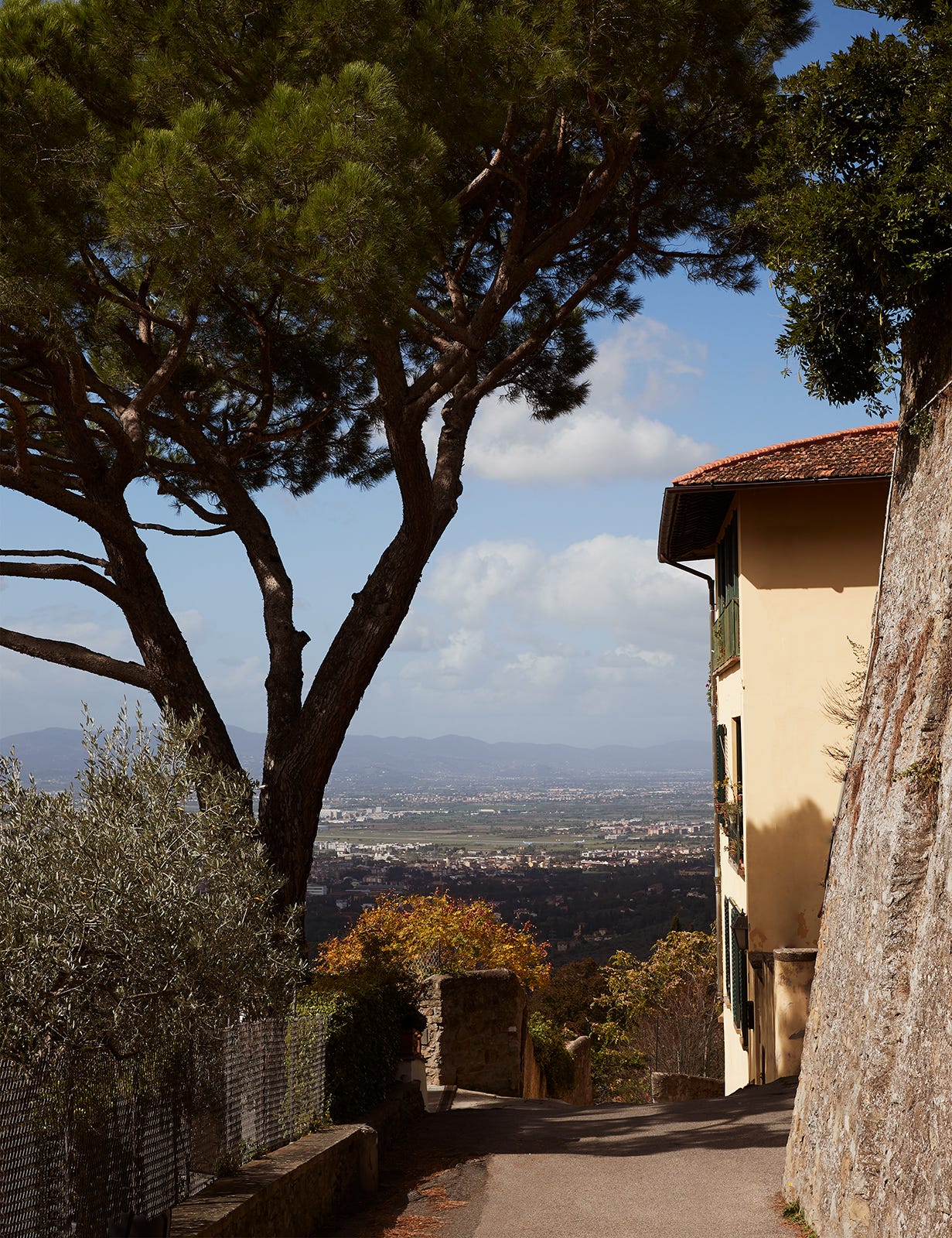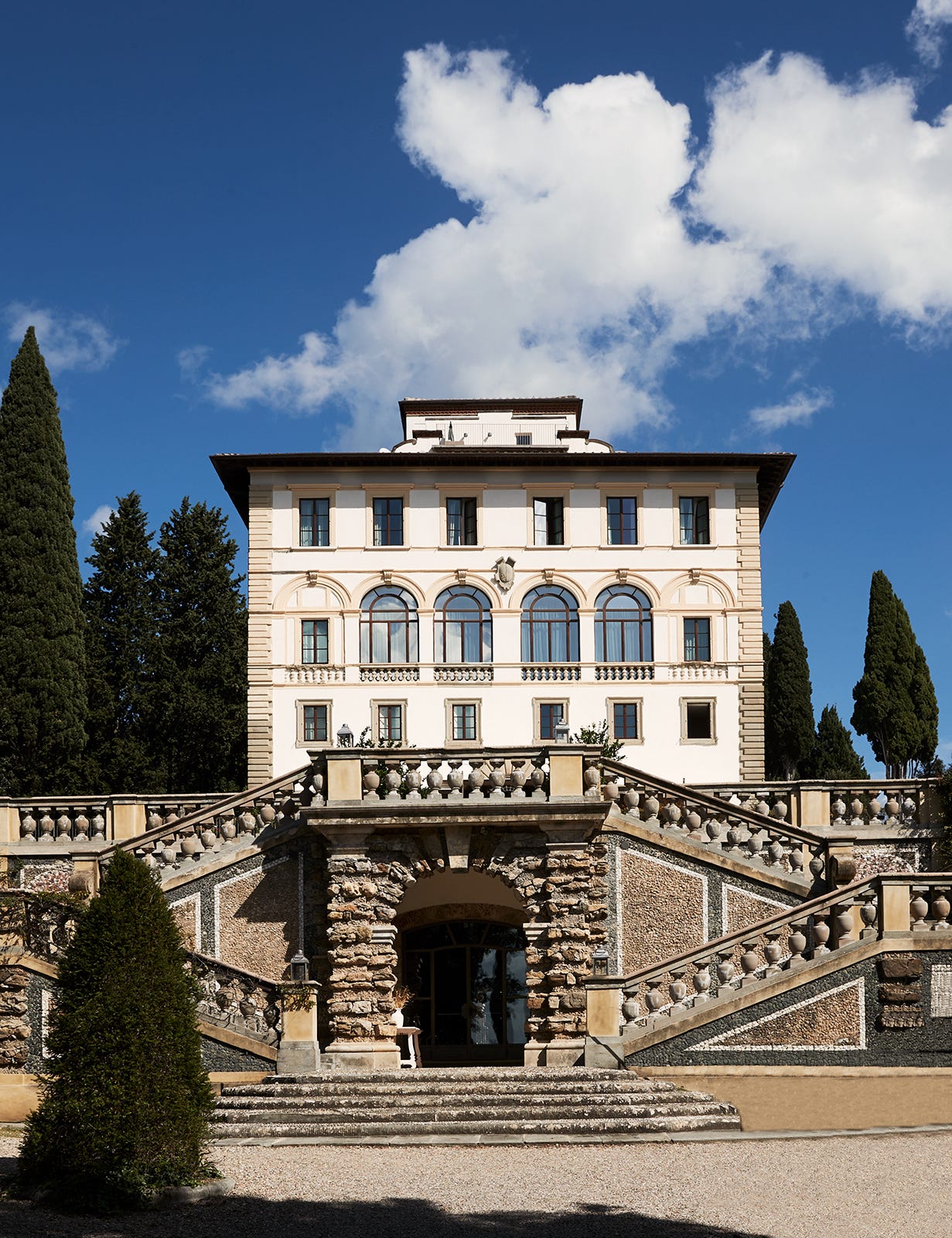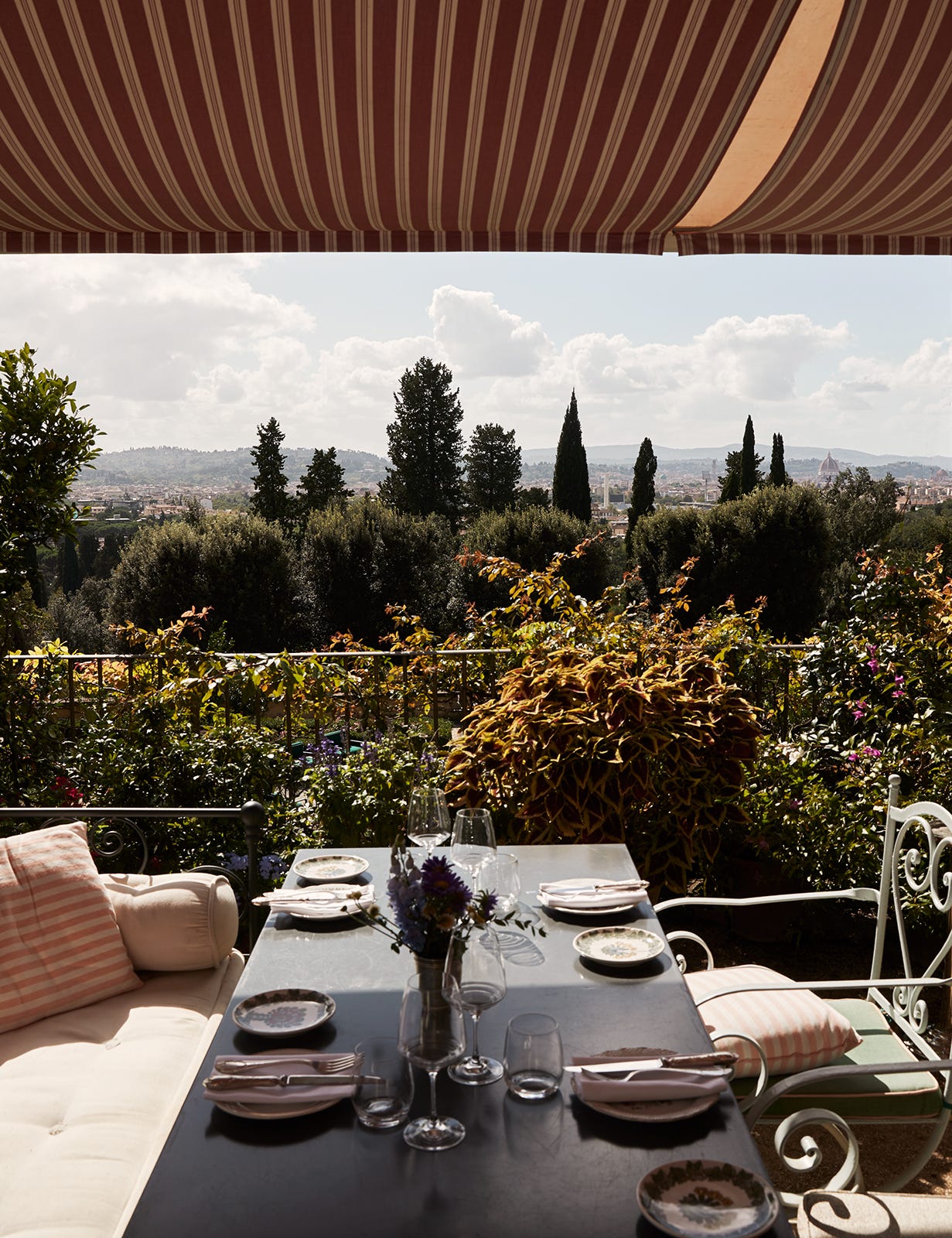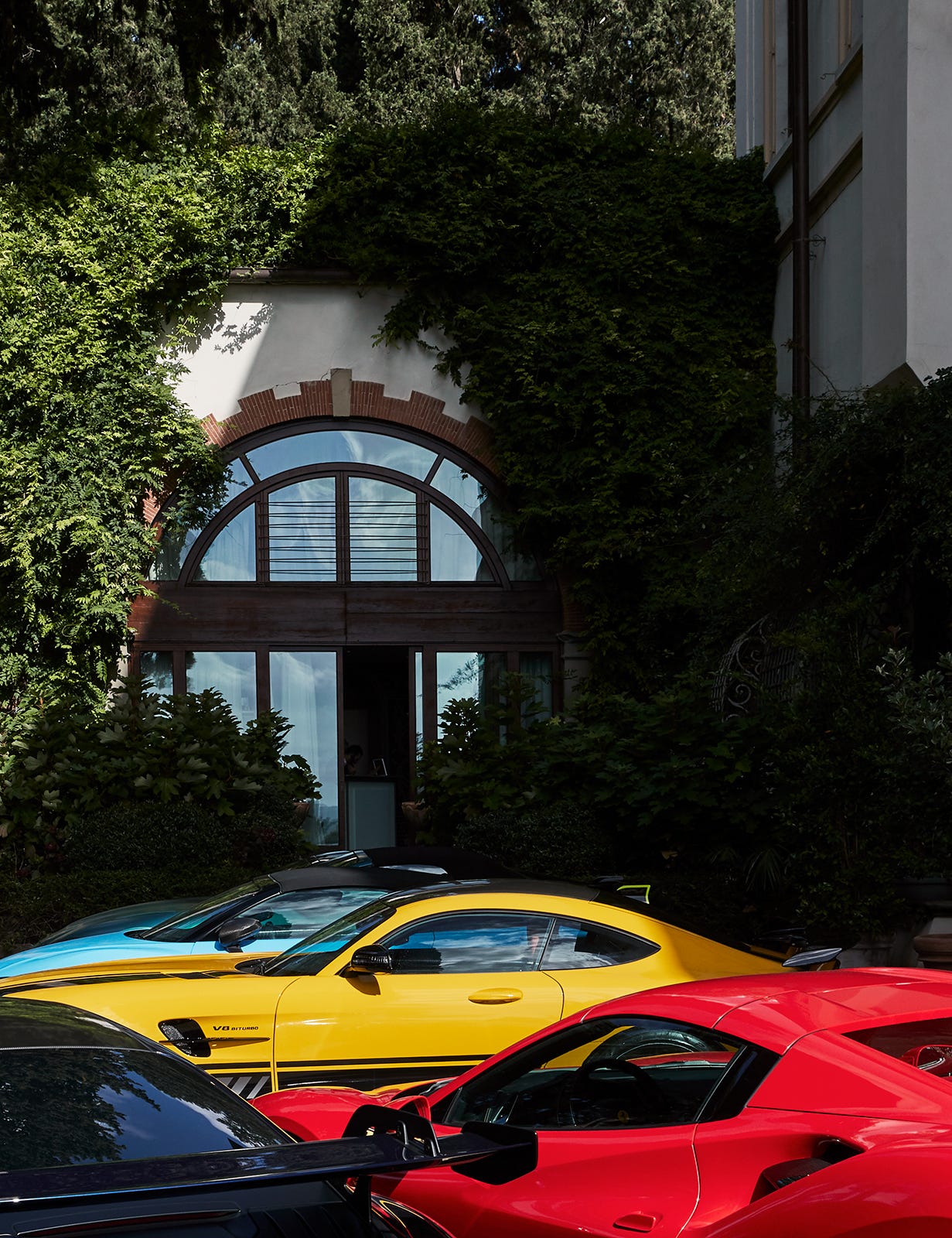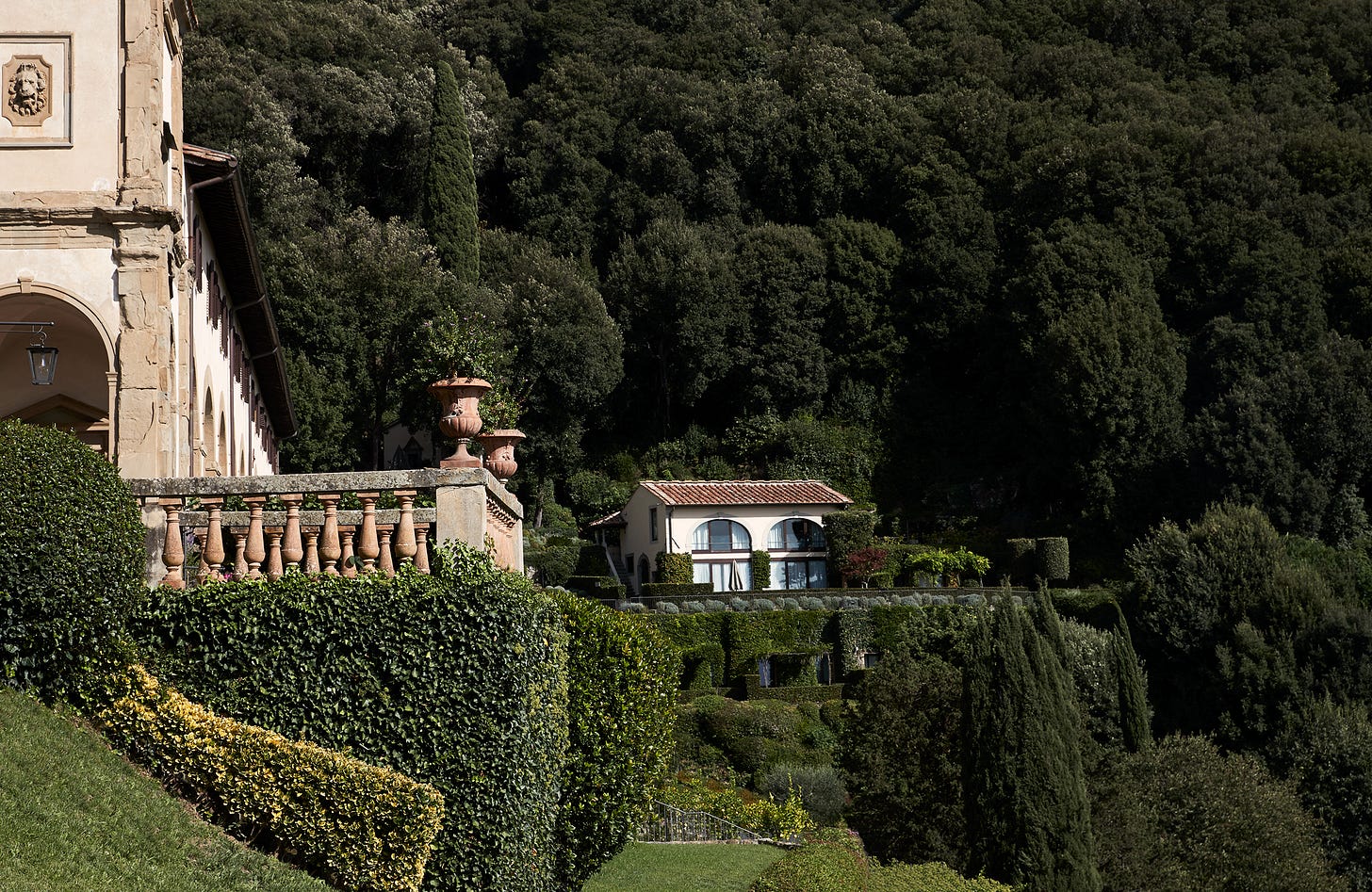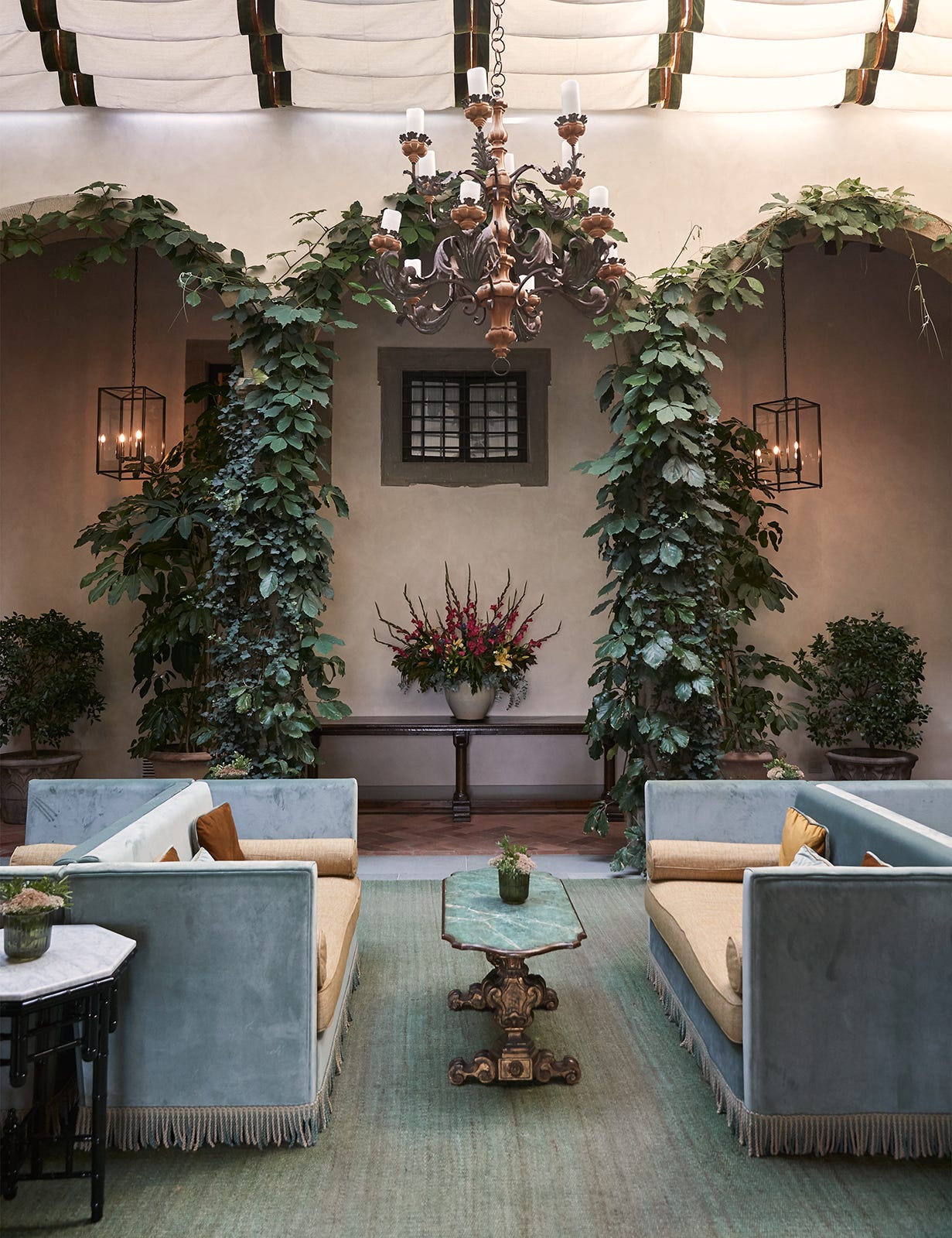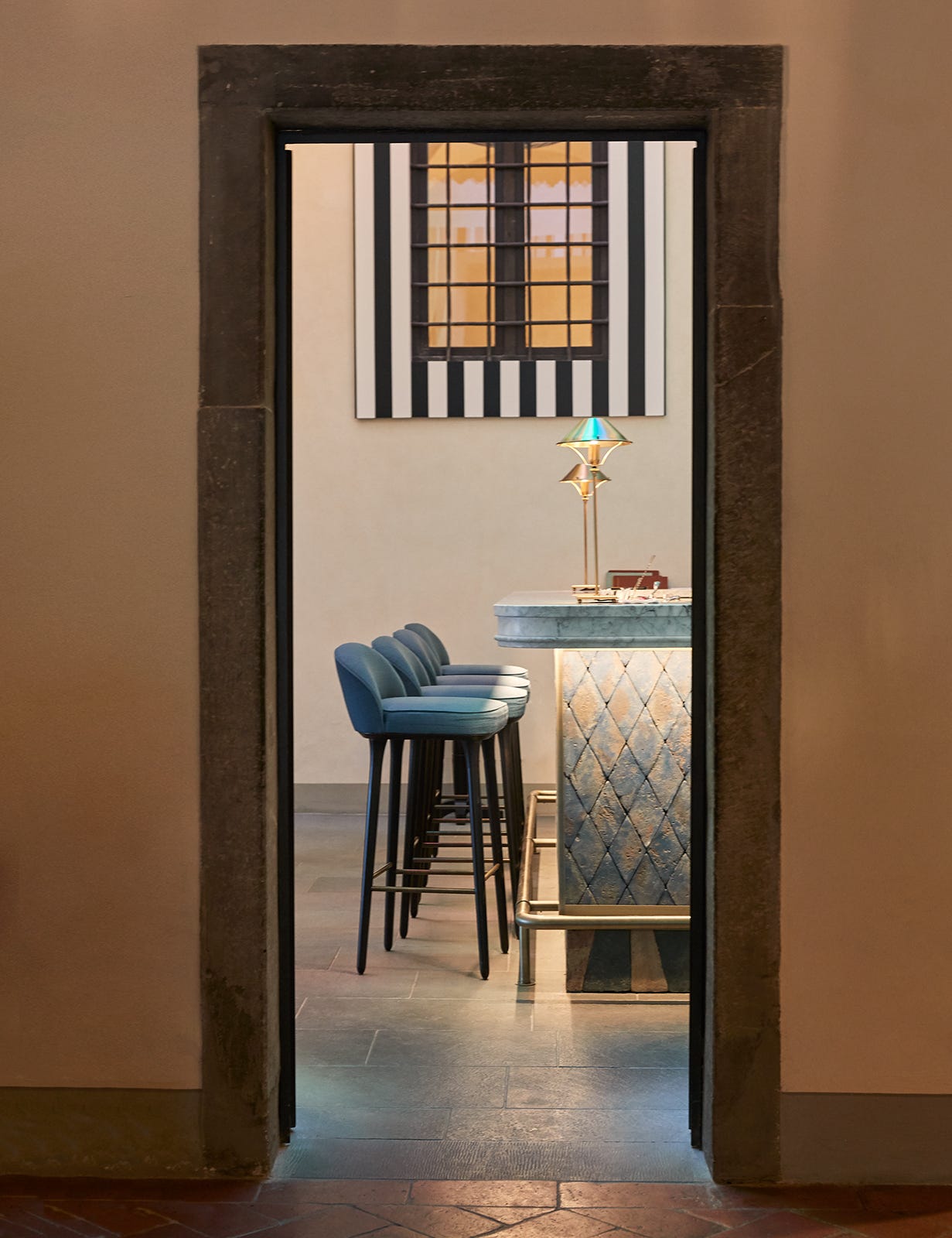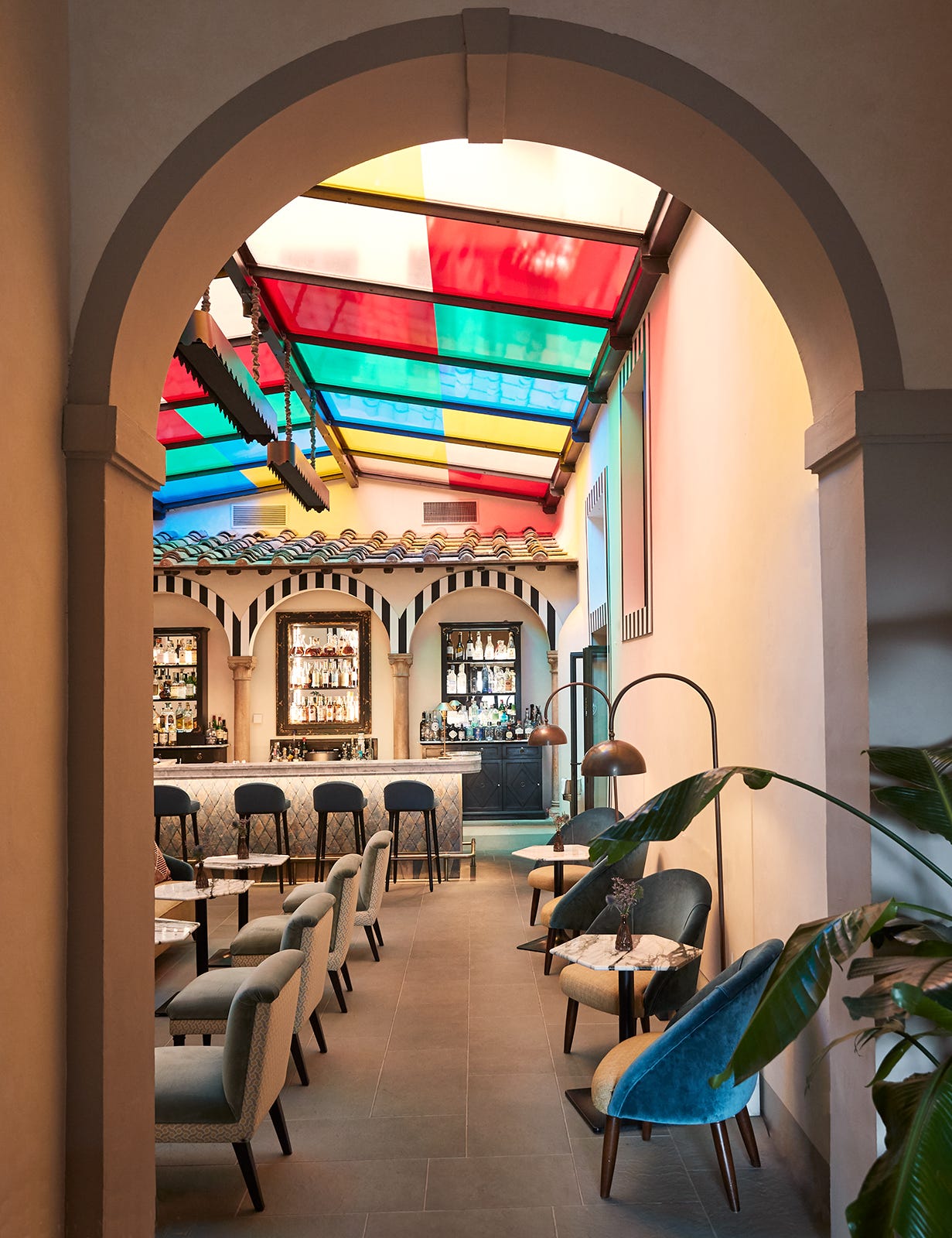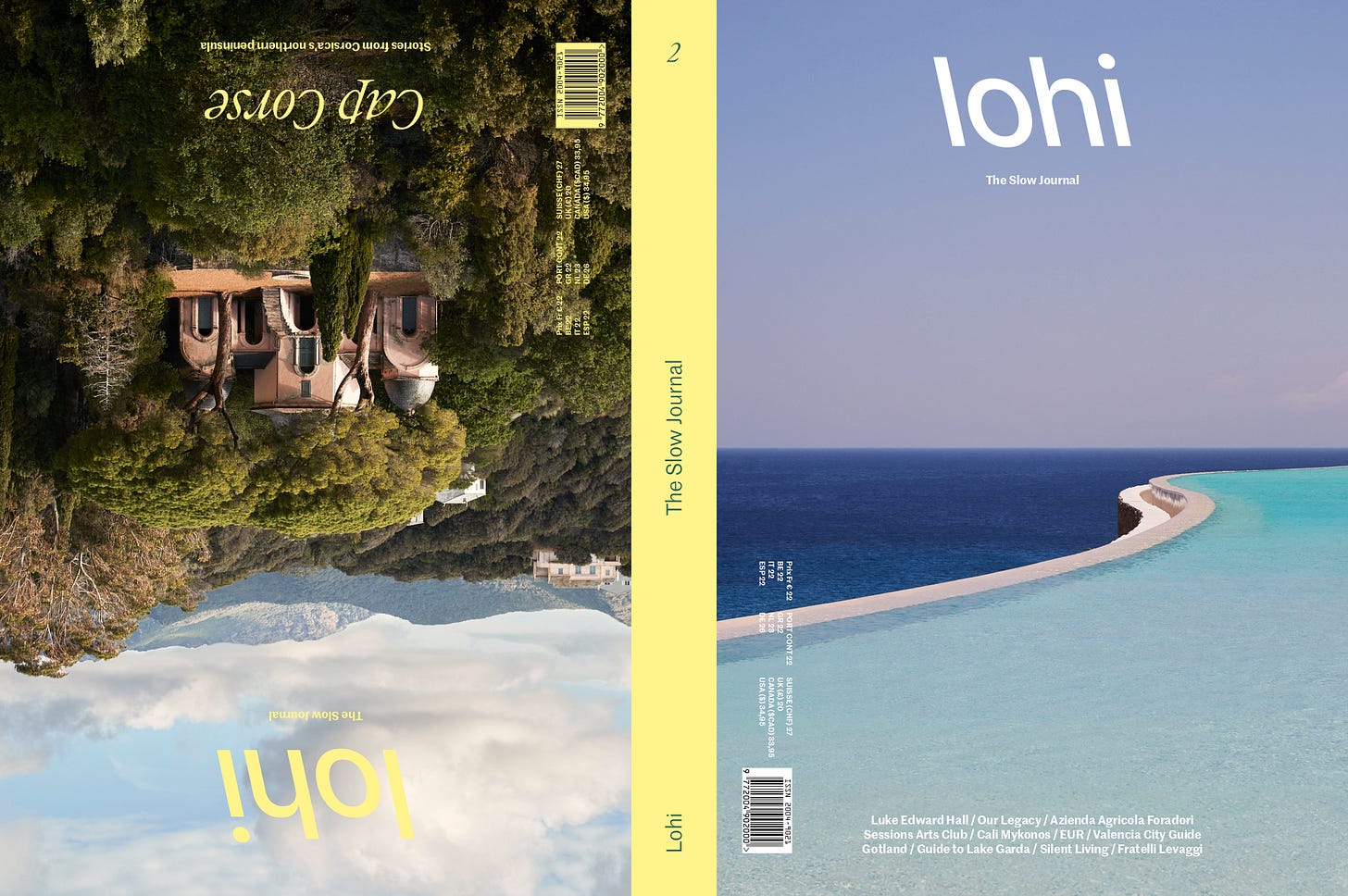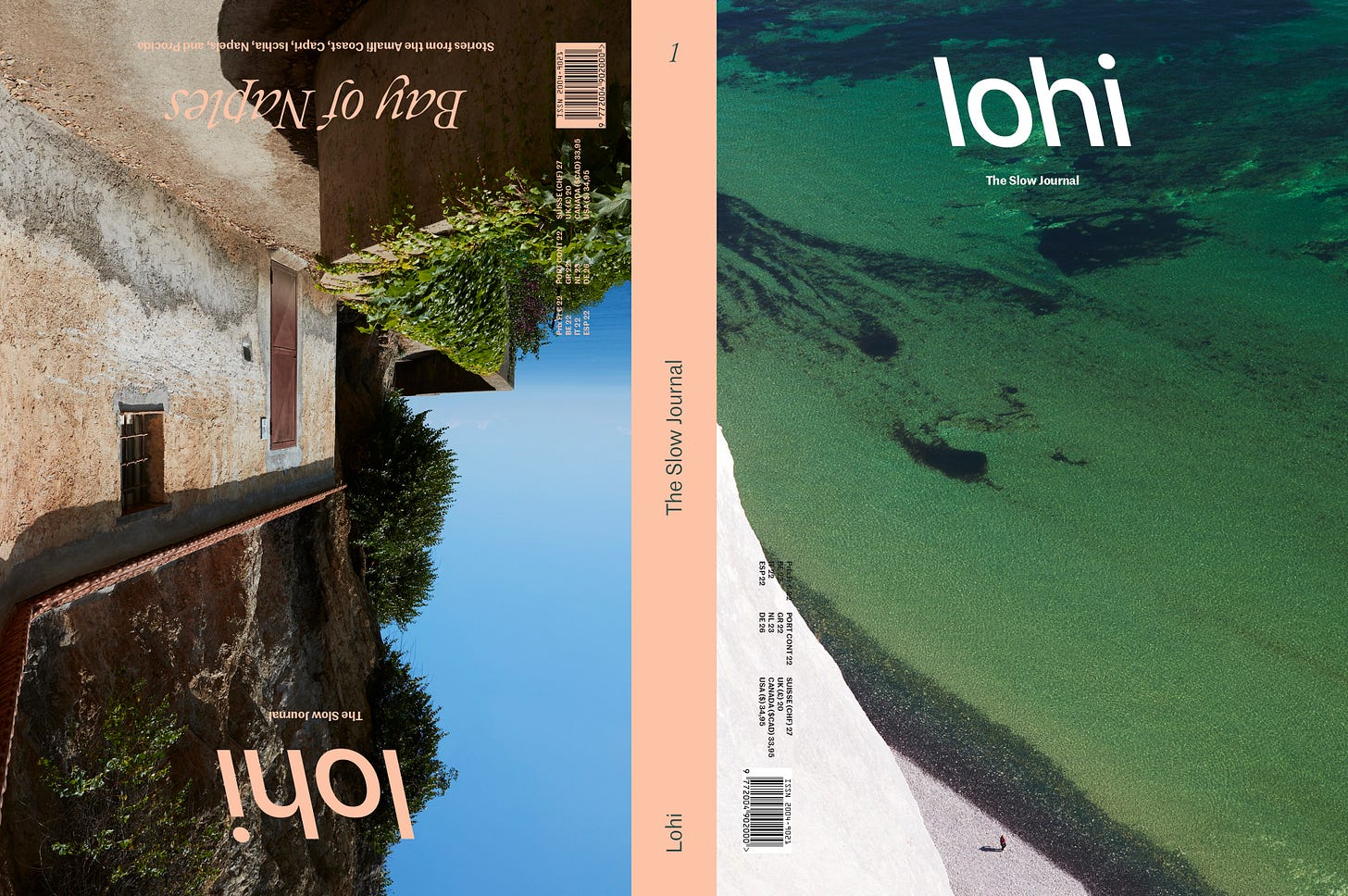Hotels in the Hills
In Fiesole, perched on gentle slopes above Florence, you’ll find some of Tuscany’s best hotels.
Florence is at the same time a wonderful experience and a nightmare, one of the most beautiful places you can visit and one of the most horrifically crowded.
In the area around the Duomo, it’s difficult to walk in a straight line, and it’s only gotten worse after Covid, as people have saved up and now are visiting all at the same time, from all corners of the world.
After seeing the mandatory sights, many people prefer to leave the most crowded neighbourhoods behind and head for the more peaceful side, Oltarno (which literally means “the other side of Arno”, Arno being the river that divides the city into two). But if you venture even further, you’ll be rewarded: On the Northeast side of Florence, Fiesole sits on sloping hills, overlooking the city below. If you’re not in a rush, t’s perfectly doable to walk from one to the other (and back again).
Once, Fiesole was one of the most important and earliest centres of the Etruscan civilisation, and ever since the 14th century it has been a getaway for the members of the upper echelons of Florentine society.
Many years ago, I attended a J W Anderson-fashion show here, in the vast park of a beautiful villa that had belonged to an erudite explorer and scientist. Afterwards, there were tables overflowing of cheese and dashing waiters serving Tuscan wine. It was my first introduction to Fiesole and ever since, I’ve viewed it in a favourable light. It remains noted for its (very) expensive residential properties, and is the most affluent suburb of Florence.
Perhaps unexpectedly, Fiesole is also home to several university campuses, including the European University Institute, Harvard, Georgetown, and Saint Mary’s of Minnesota. Having worked at several universities, I assume this is because many schools today market themselves as an “experience” and in this case you can get both a Harvard degree and a Tuscan holiday at the same time. Who wouldn’t want to attend an Ivy League school on a hillside overlooking Florence?
When it comes to sights, there’s not much to do in Fiesole and you will have seen most of the sights in under an hour. There’s the miniscule Bandini Museum, home to Medieval and Renaissance art, the outdoor “archaeological area”, and the Civic Archaeological Museum, telling the history of the site from the latest 2,000 years. All three are pleasant and worth a visit, but none is exactly memorable. If you’re not a diehard fan, I would just as well spend my time here at the hotel (and I say this as someone with an invested interest in Etruscan art!).
A Villa with a History / Il Salviatino
Il Salviatino is a five star-hotel in a former private villa in the outskirts of Fiesole. Its origins date back to the fourteenth century when it was still a medieval country house. It has been owned by some of the most illustrious of Italian noble families, from the Orsinis to the House of Salviati, who gave the villa its name.
It was once owned by Francesco d'Antonio Frilli, Marshal of the Kingdom of Naples, but it was in the hands of the poet Ugo Ojetti that it underwent its most significant rebirth. Ojetti made changes to the lodges and replanted the entire garden, turning it into a formal park, and was often visited by his friends Salvador Dalì and Gabriele D’Annunzio.
What I love the most when I’m here is to sit on the terrace, in the shade, with a view of the Duomo and the rest of central Florence by my feet. Between the city and the terrace is the widespread park, full of small terraces, fountains, and roses, as well as the entrance to the hotel’s wellness centre. It’s strange to image that only twenty years ago, the villa was in a state of neglect, having been abandoned by its owner.
Visiting the restaurant, da Giacomo al Salviatino, is a treat. It’s open for lunch, dinner or cocktails. Fruits and legumes are gathered from the hotel’s organic vegetable garden, prepared by chef Carmine Calò and ensuring that everything served is in season.
Usually, I like to stay for several hours, starting with drinks on the terrace and finishing with coffee in the salon. Of course, it’s even nicer to stay for longer than merely a meal – each room has a unique décor, crafted in a way reminiscent of Renaissance noble homes. This will also give you access to swimming pool and fitness centre.
Not Just for Monks / Villa San Michele
Going to Villa San Michele had been on my bucket list for years. I would walk around Florence, imagining what life must be like up the sloping hills of Fiesole, far from the city heat and crowded streets.
Often, I would be in Florence working, but secretly fantasising about dropping out of all my commitments, putting my phone on mute and taking a taxi up to Villa San Michele, where I would have a cup of white tea in their famous restaurant, La Loggia. The concept of a loggia is one of the cleverest architects have ever come up with, making it possible to have all the comforts of being inside while enjoying all the qualities of the outdoors.
Naturally, the food is locally sourced. The hotel’s other restaurant, Ristorante San Michele, offers traditional Tuscan dishes.
For most people, staying in this 15th-century-monastery-turned-luxury-hotel is the type of experience you have only once in a lifetime. The vaulted ceilings, glass windows, and period furniture are all carefully renovated and selected.
In some of areas, like the small bar and reception room, the atmosphere is reminiscent of luxury lifestyle hotels in other places, like Chateau Marmont in Los Angeles or the (sadly currently closed) Raleigh in Miami. It’s a kind of international aesthetic that combines good taste with a slight sense of quirkiness. I guess those with limitless funds don’t really have anything to prove, and so they like their décor to have a bit of humour. This is accentuated by the hotel’s collection of contemporary art. My favourite is by Argentinian artist Leando Erlich’s, whose work “United Kingdom” consists of a series of stacked glass panels, on which screen-printed images create the impression of a cloud, positioned directly under a 17th century fresco of the last supper.
As expected, breakfast is amazing, with an abundant selection of made-to-order delicacies. As you probably will overindulge, the best idea is to set aside an hour or two after breakfast to find a peaceful spot on the garden terrace, or perhaps go for a slow swim in the pool (where you can also get a massage).
If you want to read more guides and travel stories, you can now order the magazine from our online store, where all our issues, both current and past, are available.





